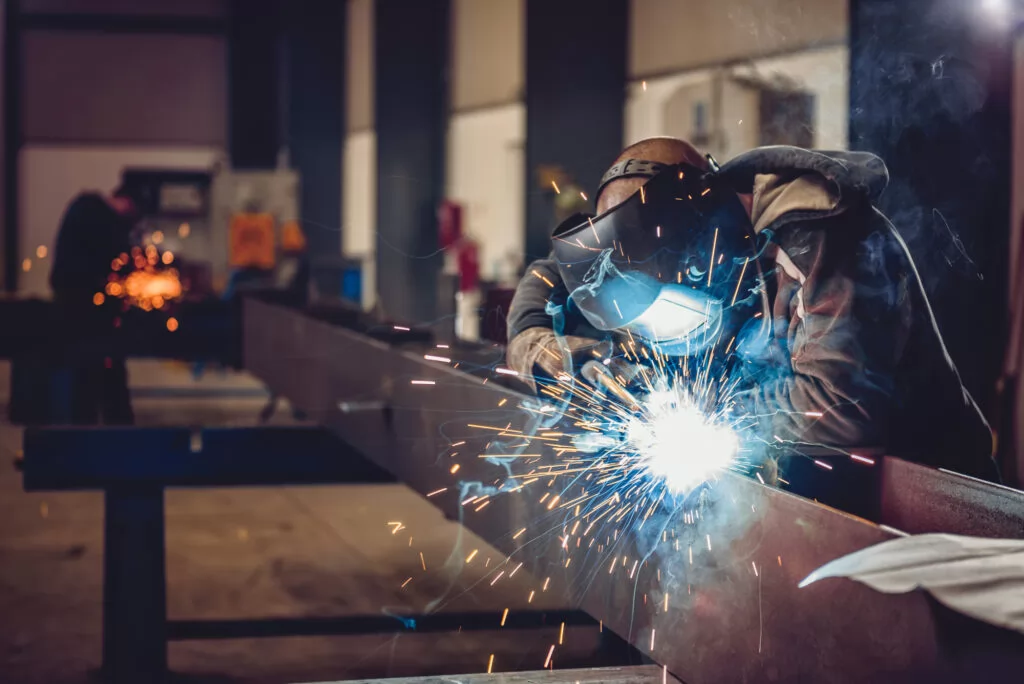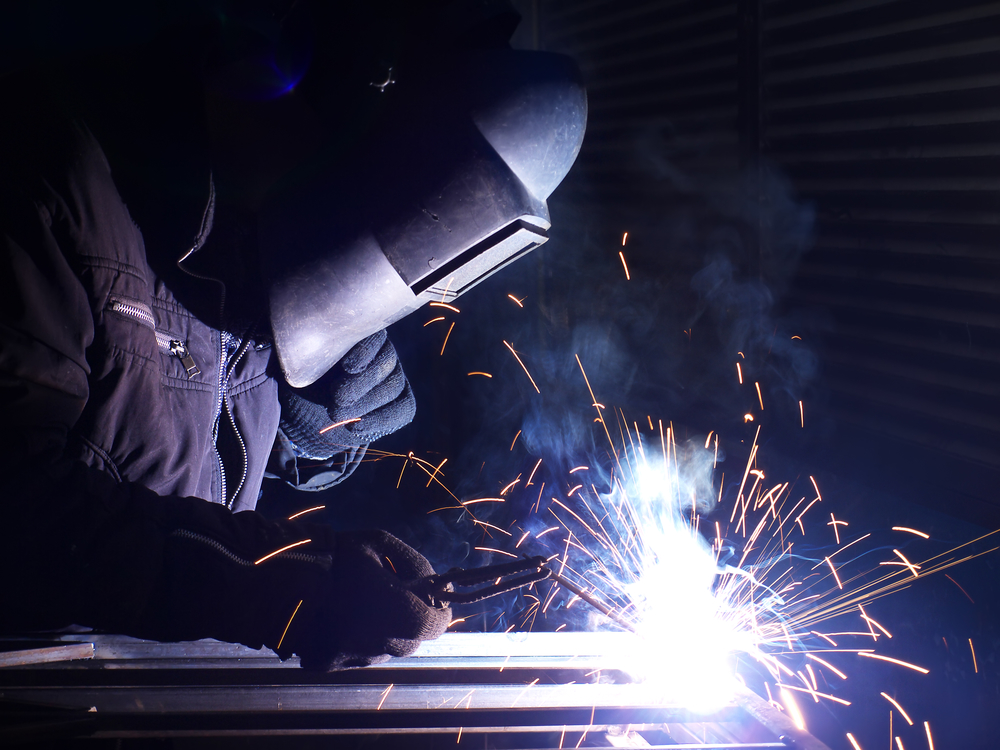A guide to perfect fusion with Montana Mobile Welding and Repair Belgrade Fabrication
Typical Welding Repair Work Issues and Just How to Address Them Effectively
Welding repair work commonly come across a variety of concerns that can threaten the honesty of the end product. Common problems consist of insufficient penetration, porosity, and misalignment, to name a few. Each flaw offers unique difficulties that call for particular approaches for resolution. Understanding these issues is crucial for welders aiming to boost their skills and outcomes. This discussion will explore these typical welding repair work problems and efficient techniques to resolve them.
Insufficient Penetration
Inadequate infiltration occurs when the weld metal falls short to totally fuse with the base material, leading to weak joints and potential architectural failings. This issue frequently originates from not enough warm input, inaccurate electrode angle, or incorrect welding speed. Welders may experience poor penetration as a result of a mistake of the essential specifications for a specific material density or type. Furthermore, contamination on the base material's surface area can prevent reliable bonding, aggravating the trouble. To attend to inadequate infiltration, welders need to guarantee suitable settings on their tools and keep a tidy job surface. Routine examination of welds is suggested to identify any type of shortages early, enabling timely adjustments and the prevention of endangered structural stability in welded assemblies.
Porosity
Porosity is a typical flaw in bonded joints that materializes as tiny gas bubbles trapped within the weld metal. This problem can jeopardize the integrity of the weld, leading to minimized toughness and prospective failure under stress and anxiety. Fabrication. Porosity generally arises from contamination, dampness, or improper welding strategies, which enable gases to escape right into the molten weld pool. To attend to porosity, welders ought to assure correct surface preparation, preserve a clean working setting, and utilize ideal welding specifications. Additionally, picking the best filler product and securing gas can mitigate gas entrapment. Normal assessment and testing of welds can aid determine porosity early, ensuring prompt restorative activities are taken, consequently preserving the quality and integrity of the welded framework
Imbalance
Misalignment in welding can arise from various factors, consisting of incorrect arrangement and thermal development. Comprehending the source is crucial for efficient resolution. Numerous modification techniques are available to straighten elements and ensure structural stability.
Sources of Misalignment
Welding misalignment usually originates from a variety of underlying problems that can compromise architectural honesty. One key cause is improper fit-up of elements prior to welding, which can bring about voids and irregular surface areas. Variations in thermal expansion during the welding procedure can also lead to distortion, especially if the materials being signed up with have different coefficients of expansion. Furthermore, inadequate clamping and fixturing might fall short to hold elements safely in area, causing motion throughout welding. Badly kept equipment, consisting of welding machines and tools, might present incongruities in the weld bead, further adding to misalignment. Driver mistake, stemming from inadequate training or experience, can additionally play a considerable role in creating misaligned welds.

Adjustment Methods Readily Available
Dealing with imbalance effectively calls for a mix of restorative methods tailored to the details issues handy. One usual approach is using jigs or fixtures to hold components in the correct placement throughout welding, guaranteeing regular positioning. Furthermore, pre-heating the products can help in reducing distortion and enhance fit-up. For considerable imbalance, mechanical realignment methods, such as using hydraulic jacks or clamps, can be employed to correct the position before welding. Post-weld warm treatment may also be essential to soothe stresses triggered by misalignment. Finally, careful assessment and change during the setup stage can prevent imbalance problems from ending up being considerable troubles, advertising a smoother welding procedure and improving total architectural honesty.
Distortion
Distortion is an usual obstacle in welding that can develop from various variables, including uneven heating & cooling. Recognizing the sources of distortion is vital for executing effective prevention strategies. Addressing this issue not only enhances structural integrity but additionally improves the total top quality of the weld.
Root causes of Distortion
When based on the extreme heat of welding, products often go through adjustments that can result in distortion. This phenomenon primarily arises from thermal growth and tightening throughout the welding process. As the weld area warms up, the product broadens; upon air conditioning, it gets, which can produce inner tensions. In enhancement, irregular heating across a workpiece can worsen these tensions, resulting in warping or bending. The type of product additionally plays a substantial function; steels with differing thermal conductivity and coefficients of expansion might react differently, resulting in unforeseeable distortions. Moreover, inadequate joint layout and inadequate fixturing can contribute to misalignment throughout welding, boosting the possibility of distortion. Understanding these reasons is crucial for reliable welding repair and avoidance strategies.
Avoidance Techniques
Efficient prevention strategies for distortion during welding concentrate on regulating warm input and making sure proper joint style. Keeping a constant heat input assists to lessen thermal mini mig development and tightening, which can lead to distortion. Making use of strategies such as preheating the work surface can also reduce the temperature level slope, promoting uniform home heating. Additionally, picking suitable joint layouts, such as T-joints or lap joints, can enhance stability and lower stress and anxiety focus. Implementing proper fixturing to protect the work surfaces in location further help in maintaining placement throughout the welding process. Lastly, staggered welding series can disperse warmth much more equally, avoiding localized distortion. By applying these techniques, welders can substantially decrease the possibility of distortion and enhance the general quality of their welds.
Splitting
Breaking is an usual concern come across in welding repair work, commonly resulting from various factors such as incorrect air conditioning rates, product choice, or poor joint preparation. The occurrence of fractures can considerably compromise the stability of the weld, bring about prospective failures during procedure. To resolve this issue, welders have to initially examine the origin, making sure that materials are compatible and appropriately picked for the details application. Furthermore, managing the cooling price during the welding procedure is crucial; fast air conditioning can generate tension and lead to splitting. Appropriate joint design and prep work additionally add to reducing the threat. Carrying out these strategies can enhance weld quality and resilience, ultimately reducing the probability of splitting in finished weldments.

Insufficient Blend
A significant concern in welding repair services is incomplete combination, which happens when the weld steel does not sufficiently bond with the base material why not check here or previous weld passes - Montana Mobile Welding and Repair Welding. This flaw can result in weaknesses in the joint, possibly endangering the honesty of the welded framework. Elements contributing to incomplete blend include insufficient warmth input, inappropriate welding strategy, and contamination of the surfaces being joined. To resolve this concern efficiently, welders ought to ensure correct pre-weld cleaning and surface area preparation, as well as readjust their welding parameters to attain ample penetration and fusion. Regular evaluation during the welding process can also assist recognize insufficient blend early, enabling for timely rehabilitative measures to improve the general top quality of the weld
Overheating
While welding repair work can improve structural stability, overheating provides a significant challenge that can cause material destruction. Excessive heat throughout welding can alter the mechanical properties of steels, causing decreased stamina, raised brittleness, and warping. This phenomenon is especially critical in high-stress applications where structural reliability is extremely important. Recognizing getting too hot can involve aesthetic evaluations for staining or distortion, in addition to monitoring temperature level during the welding process. To reduce the risks connected with getting too hot, welders need to employ proper strategies, such as controlling heat input, changing traveling speed, and using ideal filler materials. In addition, applying pre- and post-weld heat treatments can aid recover material homes and boost the general quality of the fixing, making sure lasting performance and safety and security.
Frequently Asked Questions
What Are the Usual Signs of a Welding Defect?

Exactly How Can I Examine My Welds for Quality?
To evaluate welds for top quality, one can make use of aesthetic assessments, ultrasonic testing, and radiographic techniques. Each method guarantees structural honesty, determines flaws, and verifies adherence to defined standards, ultimately improving the dependability of the welded joints.
What Security Preventative Measures Should I Take While Welding?
When welding, one should focus on safety and security by wearing ideal personal protective equipment, guaranteeing proper ventilation, safeguarding flammable materials away, maintaining a clean office, and knowing environments to avoid injuries and mishaps.
Can I Repair a Weld Without Remodeling the Entire Joint?
Fixing a weld without redoing the entire joint is feasible, depending upon the damages (Montana Mobile Welding and Repair). Techniques such as grinding, adding filler material, or making use of a welding procedure can efficiently deal with details problems while preserving the bordering framework
What Equipment Are Crucial for Effective Welding Repairs?
Necessary tools for reliable welding repair services consist of a welding maker, cable brush, mill, protective gear, clamps, and filler products. Each tool plays a vital function in ensuring top quality and security during the fixing process. Porosity commonly develops from contamination, dampness, or incorrect welding techniques, which enable gases to go to my site leave into the molten weld pool. Poorly kept equipment, consisting of welding equipments and devices, might introduce incongruities in the weld grain, further contributing to misalignment. When subjected to the extreme warm of welding, materials commonly undergo changes that can lead to distortion. Splitting is a common concern encountered in welding repair work, frequently resulting from various elements such as incorrect cooling rates, material option, or poor joint preparation. A significant issue in welding fixings is insufficient fusion, which happens when the weld steel does not adequately bond with the base product or previous weld passes.